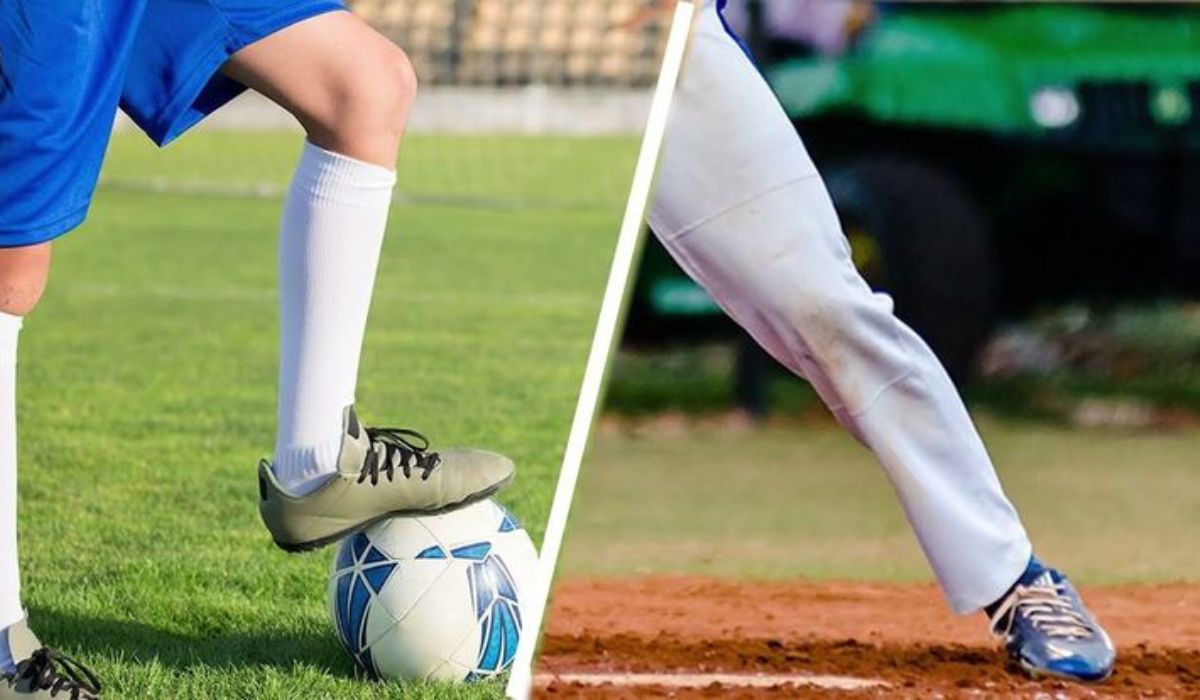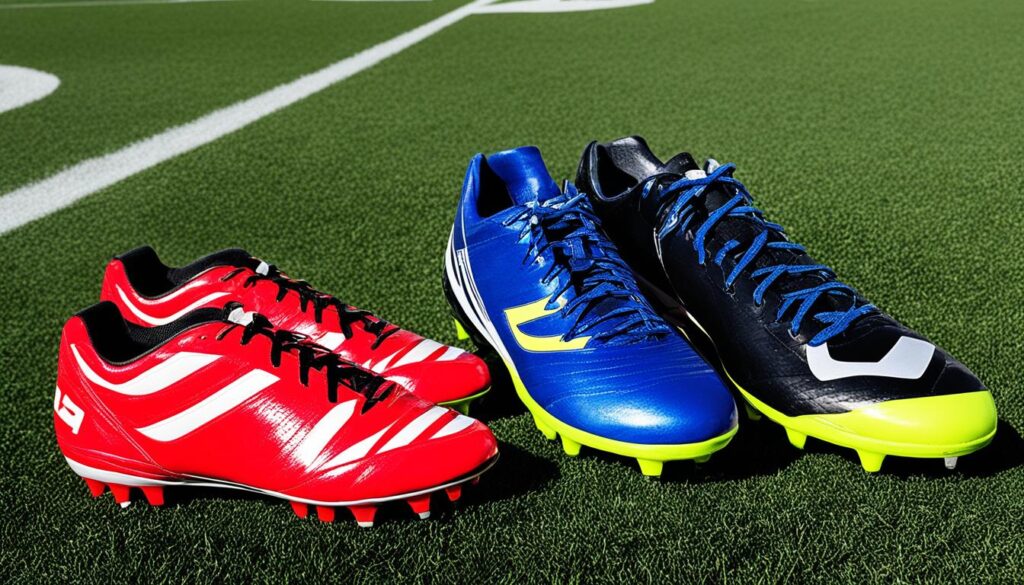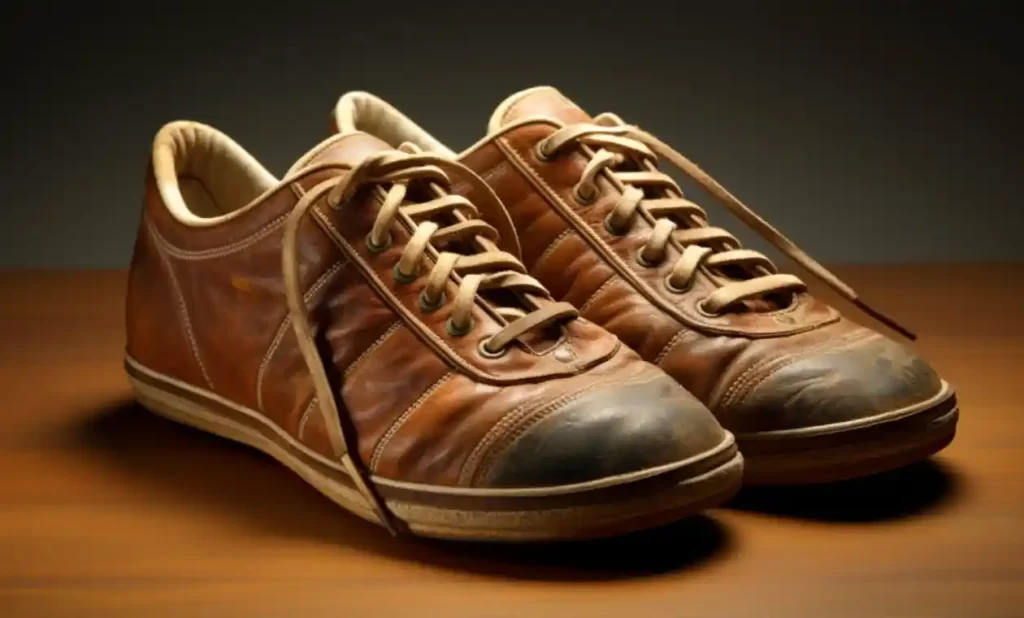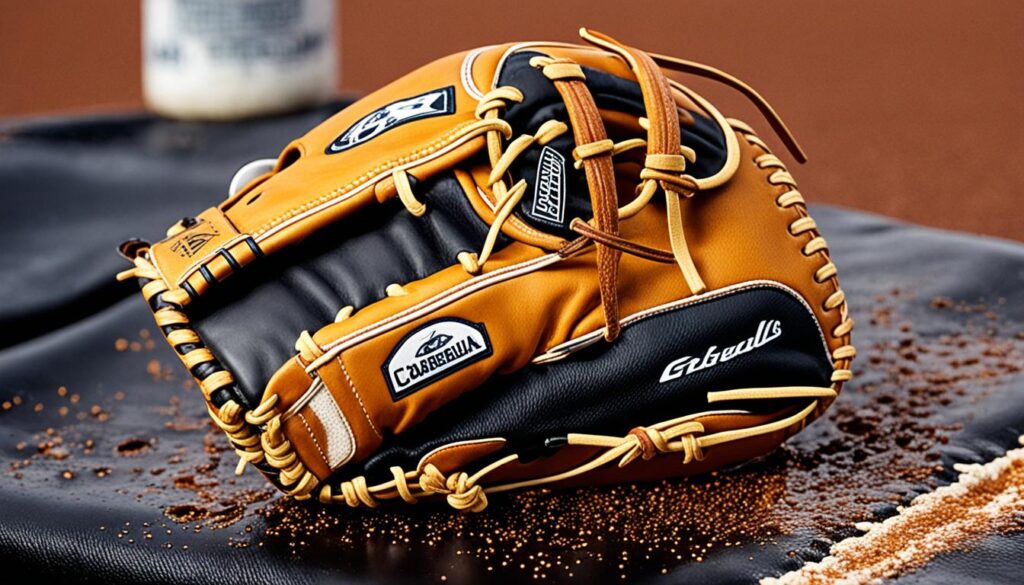
Having the right gear is crucial in every sport for top performance. When comparing baseball to soccer, cleats stand out as key equipment. You may wonder what makes baseball cleats different from soccer cleats. Is it simply the studs or is there more to it? Let’s find out.
This article will cover the main variations between baseball and soccer cleats. We’ll look into their unique designs, materials, and functionalities. Whether you play baseball, soccer, or just want to understand the differences, read on!
Key Takeaways:
- Baseball cleats feature an extra spike on the toe. This aids in jumping while soccer cleats have shorter cleats. These are designed for better balance and control of the ball.
- The design of these cleats changes to meet each sport’s distinct needs. This includes how the studs are patterned and placed.
- The material and design of the cleat significantly influence performance and safety.
- The height and length of the cleats determine traction and grip on the playing field.
- Choosing the right-sized cleats is vital for both comfort and the best performance.
The Importance of Cleat Material and Design
Choosing the right baseball or soccer cleats is vital. The material and design both impact how well you perform and stay safe. Knowing the differences between these cleats is key to making the right choice.
Baseball cleats have metal spikes. These spikes offer great grip on grass and dirt fields. They are often seen in professional baseball because they are stable. Yet, some soccer leagues ban them for safety reasons.
“The choice of metal or plastic cleats is primarily based on the playing surface and regulations set by the sporting authorities.”
Soccer cleats use rubber or plastic molded cleats. These offer versatility and durability, perfect for young athletes. Molded cleats work well on various surfaces, like grass and artificial turf.
There are also plastic cleats for soccer. They are durable and lightweight, made from materials such as TPU. These cleats are for players who need to be quick and agile.
Baseball cleats can have detachable spikes. This lets players adjust for different field types. It’s great if you play on many different surfaces.
Soccer cleats have shorter studs. This helps with ball control and balance. The length of the stud depends on the field type; shorter studs are best for dry fields.
Knowing about cleat materials and designs is essential for picking the best pair. Consider the playing surface, league rules, and what feels right to you. This will help you choose wisely.
Comparison of Baseball Cleats and Soccer Cleats
| Baseball Cleats | Soccer Cleats |
|---|---|
| Metal spikes for exceptional traction | Molded rubber or plastic cleats |
| Suitable for grass and dirt fields | Versatile for various playing surfaces |
| Customizable with detachable spikes | Shorter studs for better balance and ball control |
| May not be allowed by some referees | Accepted in most soccer leagues |
Understanding Cleat Height, Length, and Shape
Cleat height and length really matter because they impact how well you grip the field. The right cleat size depends on what the sport needs and what feels best to each player. Today, we’ll look at what works for baseball and soccer players.
Cleat Height
Low-cut cleats are great for moving fast. They let your ankles move freely. If you need to turn quickly or make swift moves, these are the best choice.
Mid-cut cleats give a bit of support without slowing you down. They cover your ankle a little, offering some stability. They help players who want agile feet while playing.
High-cut cleats are all about ankle support. They’re good for those with past ankle troubles. But, they might not be as agile as the lower cut styles.
Cleat Length and Shape
A cleat’s length and shape decide how well you stand and move on different fields. Short studs work best on dry fields. They keep you stable while changing direction quickly.
Longer studs are for slippery or soft fields. They sink in, keeping you from slipping. These cleats help you stay in control over wet surfaces.
| Cleat Length | Playing Surface |
|---|---|
| ½ inch | Dry ground conditions |
| ¾ inch | Normal grass or turf |
| 1 inch | Wet or soft ground conditions |
Cleats come in lots of shapes, like triangles or rectangles. Each shape does something different, like making you faster or more stable. Which shape to pick is often a personal choice.
Now, we understand more about cleat details. Let’s check out the different kinds of cleats for baseball and soccer.
Comparing Different Types of Cleats

Various sports need different cleats to perform well. Today, we’ll compare baseball and soccer cleats. We’ll also look at cleats for other sports.
Baseball Cleats
Baseball cleats are made for the field. They let players move quickly and stay stable. With their lower boot sides, players have better side-to-side movement.
Most have metal spikes for extra grip on dirt and grass. This helps players run around bases and make sharp turns easily.
Soccer Cleats
Soccer cleats work well on grass and turf. They have shorter studs for balance and ball control. This design also lowers the risk of getting hurt.
Soccer cleats are light. This makes them perfect for quick changes in direction on the field. They’re also flexible, good for running a lot during soccer.
Other Sports Cleats
Baseball and soccer aren’t the only sports with unique cleat needs:
- Football Cleats: They work on turf and grass. They have higher sides for extra ankle support.
- Softball Cleats: Like baseball cleats but vary by position. They differ in heights and materials based on the player’s position.
- Lacrosse Cleats: There are cuts and lengths for each lacrosse position. This provides the right support for everyone playing.
Knowing cleat differences helps pick the best pair. This is key for top performance on any field.
| Sport | Cleat Type | Main Features |
|---|---|---|
| Baseball | Low-cut with metal cleats | Designed for the diamond and provides excellent grip on dirt and grass |
| Soccer | Shorter studs | Enhances balance, ball control, and agility on various playing surfaces |
| Football | Higher sides | Offers ankle support and ideal for playing on both turf and grass |
| Softball | Similar to baseball cleats | Differ in heights and materials based on field positions |
| Lacrosse | Various cuts and lengths | Caters to the specific positions on the lacrosse field |
Each cleat type meets specific sport needs. They give the support, grip, and movement players need to perform their best.
How Cleats Should Fit for Each Sport
Having cleats that fit well is key for comfort and how you play. If you’re deciding on baseball versus soccer cleats or using a buying guide, the right fit is key. Let’s look into how cleats should fit for different sports:
Baseball Cleats
Cleats for baseball should be snug. This snugness gives stability and lets you move fast. Make sure there’s enough space in the toe box to wiggle your toes comfortably. They shouldn’t slide at the heel or be too tight against your foot. This could make you uncomfortable and might mess with your game.
Soccer Cleats
For soccer, you want cleats that fit tightly. These tight-fitting cleats will help with ball control and keep you stable. The goal is to feel the cleats hugging your feet, which makes for better ball handling and stops you from slipping during game moves.
Football Cleats
Football cleats need a snug fit just like baseball cleats. They should let you maneuver quickly and offer the needed support and grip for football. Your feet should feel snug in the cleats to avoid injuries while playing.
Softball Cleats
Softball cleats can be like your regular shoes, with some space for your toes to move. It’s all about staying comfortable during a long game. Look for a pair that balances comfort with the needed stability.
Lacrosse Cleats
In lacrosse, cleats should be snug. You might even want to go a bit smaller for a very tight fit. This helps with quick movements and stops you from sliding on the field. Always aim for a fit that’s both comfortable and secure for your best game.
Getting the right fit is vital for comfort, how well you play, and staying safe. Try on a few sizes and styles to see what feels right for you. Remember, different sports might have specific rules on cleat types, so check with your group before you buy.

Conclusion
In summary, baseball and soccer cleats differ a lot. Each type is made for the unique needs of the sport it supports. How the cleats are made, including their studs, is crucial for how well and safely players perform.
Baseball players benefit from cleats that boost sideways movement and help with jumping, like an extra toe spike. Soccer matches prefer cleats that aid in quickness, staying balanced, and handling the ball. These have shorter studs and are more flexible.
It’s vital to pick the correct type of cleats for top performance and to prevent injuries. The right fit matters a lot for comfort and efficient movement. Always check with sports organizations for any rules about what your cleats can have. This ensures you play within the guidelines and improve your game.
Whether it’s baseball or soccer, choosing the best cleats is key. Be aware of how cleats influence your performance. Select the ones that match your sport’s needs the most.
Recommended
- BASEBALL FLOW HAIRCUT: TRENDY STYLES FOR ATHLETES
- WHY ARE BASEBALL BATS SO EXPENSIVE? UNRAVELING COST

Meet Daniel Anderson, the heart and soul behind Baseball Pro Picks. At 49, Daniel’s life has revolved around baseball, a passion that’s as strong today as it was when he first fell in love with the game. Living in the USA, Daniel has dedicated countless hours to watching, analyzing, and understanding every pitch, hit, and home run, making almost no game missed. His deep-rooted love for the sport is matched only by his commitment to sharing insightful, expert analysis with fellow baseball enthusiasts. With decades of experience and a keen eye for the game’s nuances, Daniel brings a unique perspective that enriches Baseball Pro Picks. Trust Daniel to guide you through the intricacies of baseball with the authority and trustworthiness of a true aficionado.












